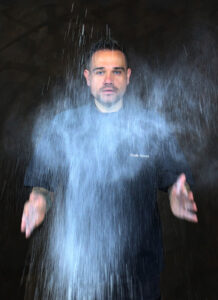Running a professional kitchen is more than cooking—it’s a delicate balance of artistry, logistics, leadership, and unshakeable focus. David Maiwald As an Executive Chef, my day doesn’t start when service begins, and it certainly doesn’t end when the last dish leaves the pass. What happens in the kitchen is a reflection of planning, discipline, and a deep love for the craft. 6:00 AM – The Wake-Up Call The day begins early. I’m up before sunrise reviewing the day's menu, supplier notes, and staff schedules over a black coffee. My phone buzzes with updates from purveyors—one delivery’s delayed, another is out of a key ingredient. Already, I’m solving problems before setting foot in the kitchen. 8:00 AM – First In, Last Out I arrive at the restaurant just as the lights flicker on in the back. The kitchen is quiet, spotless, and still. This is one of my favorite moments—pure calm before the storm. I check in with my sous chefs, go over the prep list, and check inventory against the day’s bookings. Then, it’s time to roll up my sleeves. Yes, I still cook, dice, clean, and plate when needed. Leadership in the kitchen is about presence, not just direction. 10:00 AM – Prep in Full Swing The heartbeat of the kitchen is prep. Every member of the brigade is focused: sauces are reducing, proteins are marinating, vegetables are getting knife-work attention. I move from station to station, tasting, adjusting, encouraging. Consistency is non-negotiable. A dish that was perfect yesterday must be perfect today—and tomorrow. 12:00 PM – Staff Briefing and Menu Notes Before lunch service, we gather for a quick lineup. I talk through the day’s specials, any dietary notes for VIP guests, and kitchen assignments. This is also a moment to boost morale, share praise, and correct anything that needs attention. A tight team communicates well—and in a kitchen, communication is life or death. 12:30 PM – Lunch Service Begins The kitchen hits its rhythm. Tickets start flowing, and the team moves like clockwork. I watch the pass, check plating, call out timing. It’s part dance, part warzone. The adrenaline is high, and mistakes are costly. But when a perfectly executed dish lands in the hands of a happy diner, it’s all worth it. 3:00 PM – Regroup and Recharge After lunch service, we regroup. The team cleans down, restocks, and resets for dinner. I meet with the restaurant manager to review feedback and plan upcoming specials. If there's time, I work on testing new recipes or tweaking menu items for seasonality. 6:00 PM – Dinner Rush Dinner is the real show. This is where reputations are made. The energy shifts, the lights dim, and the pace intensifies. I’m at the pass calling out orders, ensuring every plate is perfect. Mistakes happen—but how you handle them defines you. I pride myself on remaining calm and leading by example. 10:30 PM – The Breakdown The last ticket goes out, and we begin breaking down stations. The kitchen transforms again—this time into a quiet, gleaming space. I thank the team, review tomorrow’s prep list, and leave notes for the early crew. 11:30 PM – Reflection and Reset Back home, I wind down with a notebook and a nightcap. I jot down ideas, sketch plating concepts, and reflect on the day’s wins and challenges. Being an executive chef isn’t a job—it’s a lifestyle. It requires resilience, creativity, and heart. Final Thoughts A day in my kitchen is never the same. Some days are chaotic, others beautifully smooth—but all are driven by passion. The mind of an Executive Chef isn’t just filled with recipes. It’s full of strategies, mentorship, flavor pairings, and relentless pursuit of excellence. If I’ve learned anything over the years, it’s this: food is only half the story. The people, the pace, and the purpose—that’s what makes a kitchen truly unforgettable.

